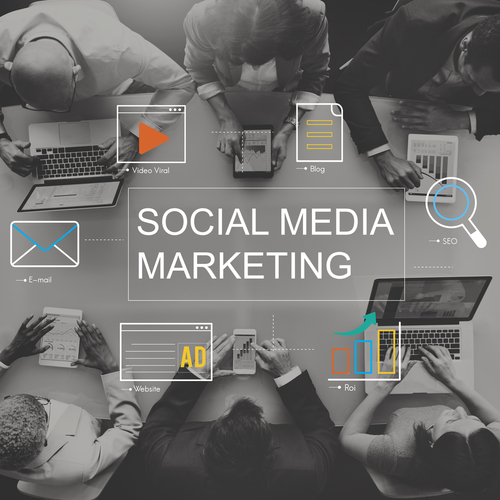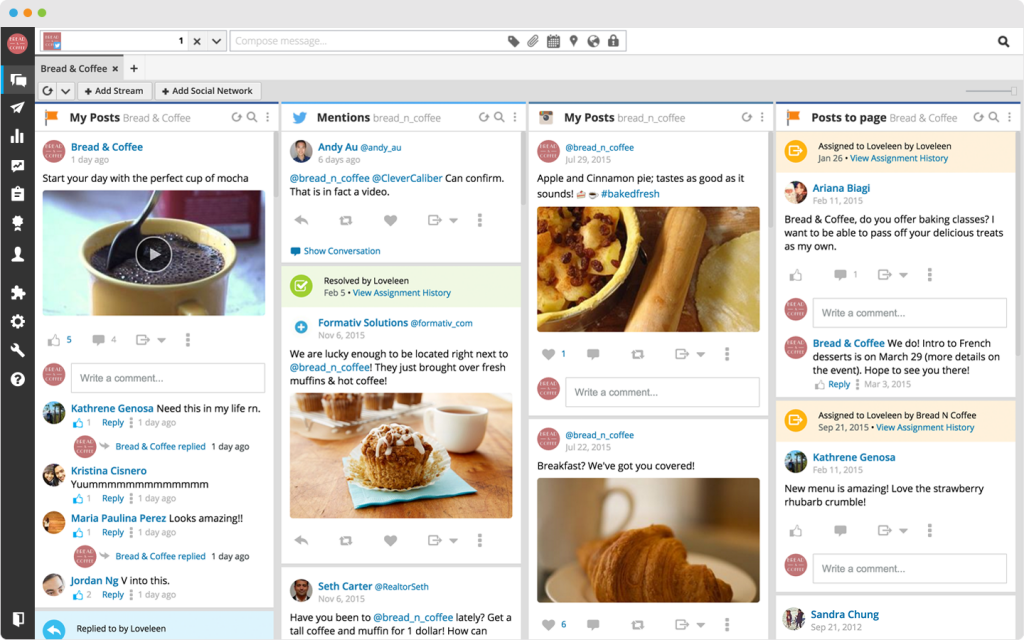20 Aug Unleash Online Success: Amplify Website Traffic

Social media posts drive targeted traffic.
Whatever your industry, segment and audience, a substantial portion of your customers and leads are on social. A recent research study found that 68% of South African adults are Facebook users. Among 18 to 24-year-olds, 78% use Instagram and 45% are on Twitter. Even among South African 65 and older, 37% are social media users.
Having access to all those customers helps you boost traffic, particularly for new site content. When you post a new blog or update your homepage, it can take a while to get traction with Google. That means very few customers will know the new content is there until the next time they’re searching for your product or service.
Social media posts provide an opportunity for the public to find your new web content and click through to your site.
And because those posts will primarily show up in the feeds of followers and people interested in your product, that traffic is typically very targeted. It won’t just boost your traffic numbers — it will bring in the type of visitors you want to attract.
The traffic benefits of social media marketing can be dramatic.
Social media posts provide an opportunity for the public to find your new web content and click through to your site. And because those posts will primarily show up in the feeds of followers and people interested in your product, that traffic is typically very targeted. It won’t just boost your traffic numbers — it will bring in the type of visitors you want to attract.
1. Using social media for business boosts your site’s SEO.
Search engine crawlers know which pages are consistently earning traffic and which are just floating out there, forgotten and ignored. Although your killer content strategy is the most important factor in your search rankings, driving traffic to your optimized pages will cause them to climb much faster.
A lot of times, this can be as simple as re-sharing evergreen content (of course, in addition to sharing your new content when it goes live). We recommend each post be re-shared once a month — a task that doesn’t have to be as time-intensive as you might think. With Facebook’s scheduling tool or Hootsuite (for Twitter, Instagram & LinkedIn), you can set the entire month all at once and you’re done.
2. Social media can increase your reach via quoted experts.
This is one of our very favorite benefits of social media marketing. Perhaps you quoted someone with a killer social media presence. Of course, you’re going to email them a link to the post when it goes live and encourage them to share it, but leveraging your own social media channels will help you go the extra mile here.
In your tweet and Facebook post sharing your new content, be sure to tag the experts you quoted so they see it pop up in their notifications.
Doing so makes it far more likely your source will share or retweet the link to their thousands (or tens of thousands) of followers, which drives traffic back to your website. It’s a win-win all around.
Social Media Is THE BEST Tool to Connect with (& Learn From!) Consumers & Industry Leaders

3. Social media marketing helps you understand your audience.
Part of what makes social channels like Twitter and Instagram effective marketing tools is the interaction you have with your customer base. By reading their tweets and status updates, you’ll gain insights into their daily lives and consumer behaviors, and answer questions such as:
- What products/services are they buying and why?
- What hobbies do they have?
- What kinds of posts do they love to share?
- What websites do they visit?
These insights have obvious marketing benefits. When you understand your customers, you can write better content and more compelling posts, which leads to more traffic. But the benefits can sometimes go far beyond marketing, helping you identify customer pain points, improve sales conversions and even refine your product strategy.
4. An active social media presence builds relationships with your audience.
Consumers see Twitter, Facebook, and Instagram as social networks, not marketing machines.
That can be a challenge when you’re first developing your social media marketing strategy. A lot of companies instinctively take a hard-sell approach, inundating their followers with discount offer codes, new product announcements and customer reviews. Then, when the account only brings in modest traffic gains, they assume social just isn’t a good fit for their brand.
But customers don’t want to be pitched to — they want authentic engagement.
When you stop seeing social as a way to pitch your customers and start seeing it as a way to connect with them, it can transform your brand. You help customers by answering their questions, entertaining and informing them with relevant content and even forming bonds over shared interests.
And that comes with serious ROI. If you’re following social media marketing best practices, you’ll get a ton of exposure. That exposure brings in new leads. Over time, those leads become followers, followers become customers and customers become dedicated brand promoters, continuing the cycle.
5. Social media ads allow targeting and retargeting.
Why advertise on social media?
Because social media platforms offer highly targeted ads, which can be customized around your customers’ needs. Facebook ads, for example, can target customers by factors like age, location, education level, industry and even user behavior — e.g. the pages a user has liked.
Pro Tip: Install a Facebook pixel on your website to track how your ads affect customer behavior and retarget your ads accordingly. Over time, Facebook will learn which users are more likely to click your link or buy a product, delivering your ads to the people most likely to convert into solid leads and sales.
6. A strong social media presence builds brand loyalty.
It’s easy to understand why: when you’re engaging the public on social media, you’re building connection and rapport. You’re taking the time to provide your followers with useful information, help, and entertainment, without asking for anything in return.
That shows customers you value them, not just as a source of revenue, but as people. Customers will begin to see you as an entity that cares about them and has values, personality, and vision. And in a competitive market, that can make a huge difference.
7. Social media is the perfect addition to your PR strategy.
Press releases are an important part of any marketing strategy, especially when you’re launching a new product or making a huge change in your company, but most people get the distribution part terribly wrong. If what you’re accustomed to is writing a press release and sending it out on PRWeb, you’re wasting your money.
Social media, on the other hand, provides you with space where you can reach your target audience in a more personal, conversational way. And if your customers have questions, they can ask you right then and there.
When it comes to newsjacking, social media is king.
In our media-saturated culture, it’s hard to tell when fate will throw a great opportunity at your brand. Sometimes your brand gets mentioned on a cable TV show or tweeted about by an influencer. Other times, there’s a news story, meme, or pop-culture phenomenon that fits perfectly with your branding.
If you can jump in and engage with the story while everyone is paying attention, it can lead to viral posts, traffic boosts, press coverage and greater visibility for your brand. This strategy, known as newsjacking, works best if you get your voice out there while it’s still breaking news. If you join in too late, you’ll just look like another company trying to ride the trend.
You can find potential customers who don’t already know your brand.
Social media marketing enables you to search out customers looking for information related to your product — even if they aren’t familiar with your company.

For example, on Twitter, you can use Hootsuite to set up streams, following specific keywords related to your industry or products. When you spot people tweeting about those products, you can direct them to your site, or explain how your product can address their needs.
This strategy can also be valuable for customers who tweet about your brand, but may not be familiar with a new product or use case. By reaching out to them with new information, you can not only influence a sales decision but also show customers how your brand is growing to better meet their needs.

